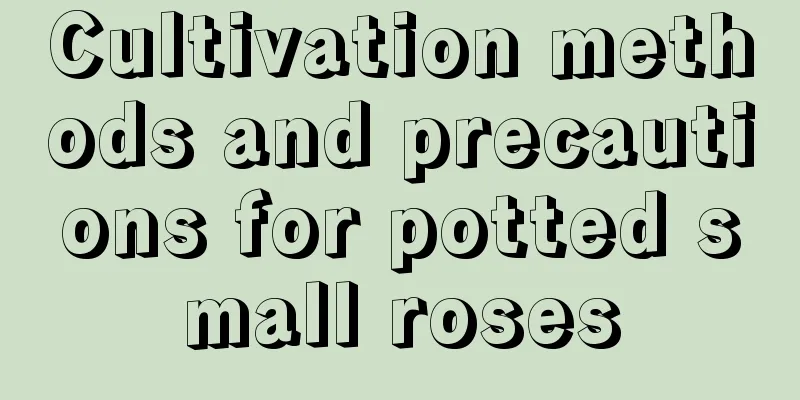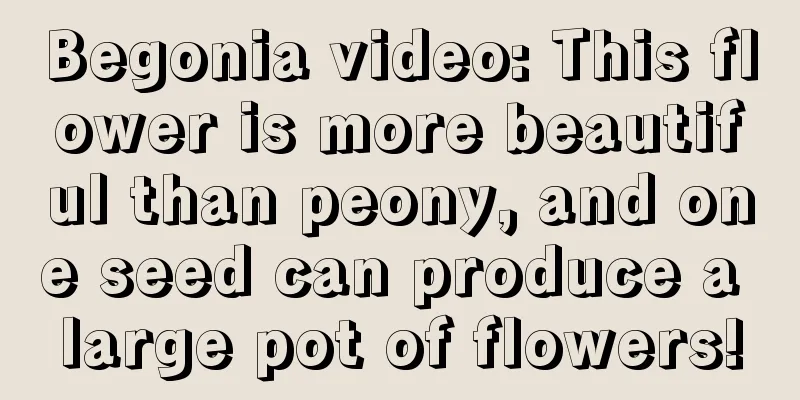How to cultivate brocade flower

1. Maintenance methods1. Temperature: The hydrangea is a thermophilic plant. It is not very resistant to cold or high temperatures. If the temperature in summer exceeds 30 degrees, its growth will slow down and its branches and leaves will become dehydrated. The temperature in winter cannot be lower than zero degrees, otherwise it will be frostbitten and will not be able to grow normally the next year. 2. Watering: After planting, you need to water it thoroughly at one time to ensure the survival rate. In the subsequent growth process, you must also provide enough water, but there should be no accumulation of water. And it should be noted that you should wait until the soil becomes dry before watering. Therefore, you must insist on watering it thoroughly when it is dry, and do not disrupt the normal absorption pattern. 3. Light: If you want it to bloom normally, you must ensure sufficient warm light. Therefore, if you grow it outdoors, you need to plant it in a desired place. A hidden environment will not allow it to bloom normally, and its ornamental value will be completely lost. If you grow it indoors, it is best not to place it on the balcony in summer. It can receive light normally in other seasons. 4. Fertilization: Apply sufficient base fertilizer when planting. Applying enough fertilizer can promote the growth rate of seedlings. It can be applied once every two months during the subsequent breeding process. You can reduce the amount of fertilizer in winter. When fertilizing crops at home, you can dilute the solid fertilizer before applying it. 2. Breeding techniques1. Reproduction: Division is the main method of reproduction. This method is the simplest and most commonly used. During its dormant period, pick some small plants around the mother plant and then replant them. It will bloom after about two years. 2. Pruning: There is no need to prune it much, because if it is planted in a garden, there will be sufficient ventilation and no rotten branches and leaves will appear. So if it is planted at home, the branches and leaves may turn yellow and need to be cut off. 3. Problem diagnosis and treatment1. Disease: Charcoal blast will occur, and spots of varying sizes will appear on the branches and leaves. These diseased branches can be cut off, and sufficient ventilation needs to be maintained. 2. Pests: The fall armyworm will appear and bite holes in the normal leaves. You can spray the panacea to control it. IV. Other issues1. Toxicity: It is poisonous. Although it has always been used as medicine, it cannot be used indiscriminately. You need to follow your doctor's orders. 2. Can it be raised at home? Yes, it is very ornamental and can improve one’s mood. |
>>: Cucumber cultivation method
Recommend
Breeding methods and precautions of colorful red star
1. Maintenance methods 1. Soil: The colorful red ...
How to grow jade pendants so that they can bloom to full bloom?
Jade pendant is also called jade ornaments, jade ...
How to grow ginger to get high yield?
Ginger has strong adaptability and can be found g...
Tips for growing cymbidium orchids
Cymbidium is a very beautiful flower with a beaut...
The value of evening primrose
The ornamental value of evening primrose Evening ...
Is grape planting profitable? What are the benefits of planting?
Is growing grapes profitable? Grapes are a fruit ...
Honeysuckle planting technology and cultivation management methods
In recent years. Honeysuckle is widely favored by...
How many days does the lettuce grow?
During the growth process, lettuce has a relative...
How to prune kiwi trees
Kiwi tree pruning time It is generally best to pr...
How to grow raspberries
1. Maintenance methods 1. Temperature: It has a v...
Mint growth environment conditions and characteristics
Mint growth environment conditions and requiremen...
Can pineapple peel be used as fertilizer?
Pineapple peel as fertilizer Pineapple peel can b...
Can wolfberry trees be transplanted in winter? Can they survive in winter?
Can wolfberry trees be transplanted in winter? Wo...
The difference between Hongfentaige and Clara
The difference between Hongfentaige and Clara: le...
Can I grow blueberry trees at home?
Can I grow blueberry trees at home? You can plant...









